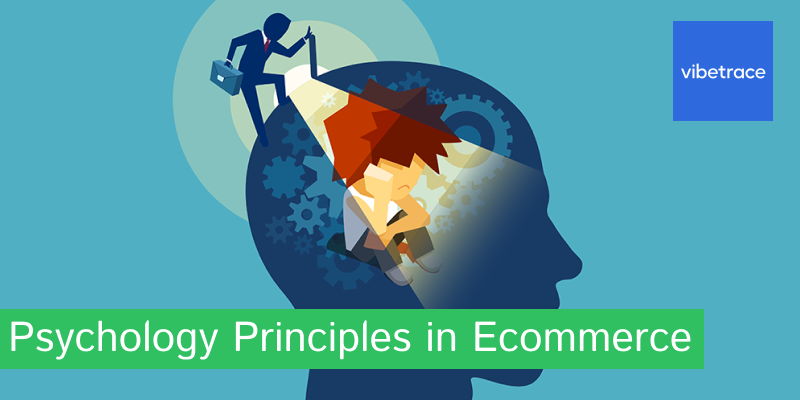We’ve used these psychology principles for over 90+ clients to grow their conversions and revenue. If you actually IMPLEMENT them for your brand, it’ll be unreasonable not to grow fast.
You can implement those psychology principles in your marketing strategy in places like: copywriting, email subject lines, A/B testing or even Call to Actions. See below the full list .
Goldilocks Principle
Offer a “just right” option between two extremes to appeal to customers looking for a balanced choice.
How to use Goldilocks Principle
Provide three pricing tiers with different features, with the middle option offering the best value for most customers.
Bizarreness Effect
Strange or unusual information is more memorable, so incorporating unique elements in marketing campaigns can increase recall.
How to use Bizarreness Effect
Use unexpected visuals or unconventional product descriptions to make your marketing materials stand out and be more memorable.
Dunning-Kruger Effect
People with limited knowledge may overestimate their expertise, so provide clear, easily understandable information to help customers make informed decisions.
How to use Dunning-Kruger Effect
Offer concise explanations and simple visuals to clarify complex product features or concepts for your audience.
Foot-in-the-Door Technique:
This technique involves encouraging customers to agree to a small request, increasing the likelihood they’ll accept larger requests later on.
How to use Foot in the Door Technique
Ask customers to sign up for a newsletter, then follow up with a special offer or discount to encourage a purchase.
Rhyme-as-Reason Effect
Rhyming phrases are perceived as more truthful, so incorporating catchy slogans can enhance marketing messages.
How to use Rhyme-as-Reason
Create a memorable, rhyming tagline for your brand or product to reinforce key benefits and improve credibility.
Information Gap Theory
People are driven to fill gaps in their knowledge, so creating curiosity and a desire for information can encourage engagement.
How to use Information Gap Theory
Tease upcoming product launches or features, prompting customers to sign up for updates or visit your website for more information.
Serial Position Effect
Customers are more likely to remember the first and last items in a list, so consider item placement in marketing materials and product listings.
How to use Serial Position Effect
Place your most important product features or benefits at the beginning and end of a list to maximize their impact.
Hard-to-Get Effect
Products or services perceived as scarce or difficult to obtain can seem more valuable, so create a sense of exclusivity to boost demand.
How to use it Hard to Get Effect
Promote limited edition products or exclusive member-only offers to generate interest and drive sales.
Honeymoon Effect
New customers are often more engaged and excited, so capitalize on this initial enthusiasm with timely offers and personalized experiences.
How to use Honeymoon Effect
Send welcome emails with special discounts or tailored product recommendations to new customers shortly after they sign up.
Spotlight Effect
Customers often believe they’re being observed more closely than they are, so ensure privacy and security in the purchasing process.
How to use Spotlight Effect
Highlight your commitment to data privacy and security to reassure customers and build trust in your brand.
Veblen Effect
For luxury goods, higher prices can signal higher status and quality, so consider premium pricing and packaging to create a sense of exclusivity.
How to use Veblen Effect
Price luxury items higher than competitors and use high-quality materials for packaging to emphasize the premium nature of your products.
Door-in-the-Face Technique
Start with an unreasonably large request, followed by a smaller, more reasonable request, making the second request more likely to be accepted.
How to use Door in the Face Technique
Offer an expensive product bundle, then present a more affordable option, which will seem more reasonable in comparison.
Do you like this article?
Join our CX for Retail dedicated newsletter!

Stay connected to what’s really important to optimize your digital revenues.
By clicking the button, you accept our Terms & Conditions. Also you will need to confirm your email address.
Benjamin Franklin Effect
When people do a favor for someone, they tend to like that person more, so encourage customer engagement and interaction to build positive relationships.
How to use Benjamin Franklin
Ask customers for feedback or reviews, then follow up with a thank you message or offer to foster goodwill and loyalty.
Similarity Principle
Customers are more likely to trust and purchase from those they perceive as similar to themselves, so tailor marketing messages to resonate with target audiences.
How to use Similarity Principle
Adjust your marketing tone, imagery, and messaging to reflect the demographics and interests of your target audience.
Bystander Effect
In a group setting, people are less likely to take action, so personalize marketing messages and create a sense of individual responsibility.
How to use Bystander Effect
Address customers by their first name in emails and tailor offers based on their preferences, encouraging them to take action.
Repetition Effect
Repeating key marketing messages or product benefits can increase recall and reinforce brand messaging.
How to use Repetition Effect
Use consistent messaging across multiple marketing channels, such as email, social media, and advertising, to strengthen brand recognition.
Illusory Truth Effect
Repeated exposure to a statement, even if false, can increase its perceived truthfulness, so consistently reinforce key marketing messages.
How to use Illusory Truth Effect
Regularly reiterate your product’s unique selling points or benefits to solidify customer perceptions of its value.
Negativity Bias
Negative experiences have a stronger impact on customer perception than positive ones, so prioritize addressing complaints and mitigating negative feedback.
How to use Negativity Bias
Monitor and promptly respond to customer complaints, and implement improvements to prevent future issues from arising.
Reactance Theory
People dislike feeling restricted or controlled, so emphasize customer freedom and choice in marketing messages.
How to use it Reactance Theory
Offer multiple product options, customization features, or flexible return policies to make customers feel more in control of their decisions.
Regret Aversion
People want to avoid feelings of regret, so emphasize the potential for missed opportunities if customers don’t take advantage of a deal or purchase a product.
How to use it Regret Aversion
Highlight limited-time offers or dwindling stock levels to create a sense of urgency and encourage customers to take action.
Where to use those Psychology Principles?
Psychology principles are like secret sauces in a digital marketer’s toolkit. Here’s where you can sprinkle them:
- Copywriting: Use principles like scarcity (“Only 2 left!”) or authority (“Experts recommend…”) to make your messages more persuasive.
- CTAs (Call to Actions): Leverage colors and phrasing that evoke emotions. For example, red for urgency or “Get Started” instead of “Submit.”
- User Experience: Use the psychology of flow to create a seamless, intuitive user journey that keeps people engaged.
- Email Marketing: Personalization and social proof (“Your friends also bought…”) can make your emails more effective.
- Retargeting: Use the principle of “reciprocity” by offering a small discount or freebie to get something back—like a purchase or a subscription.
- Content Marketing: Storytelling taps into empathy and can make your brand more relatable and memorable.
- Social Media: Use the “liking” principle by showing the human side of your brand to build rapport and trust.
- Pricing Strategies: Psychological pricing ($9.99 instead of $10) can make a big difference in perception and sales.
- A/B Testing: Test psychological principles like different colors, phrases, or layouts to see what resonates most with your audience.
- Customer Reviews and Testimonials: Leverage social proof to build credibility and trust.
- Landing Pages: Use principles like “FOMO” (Fear of Missing Out) to encourage sign-ups or purchases.
- Sales Funnels: Understand the stages of decision-making to guide the customer smoothly from awareness to conversion.

